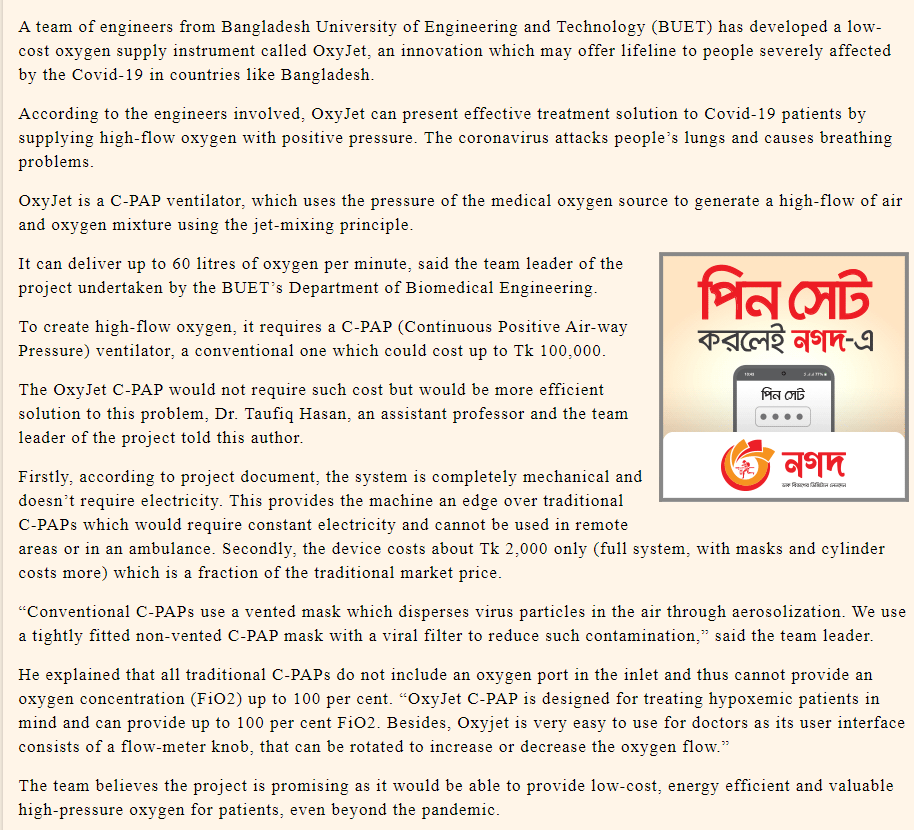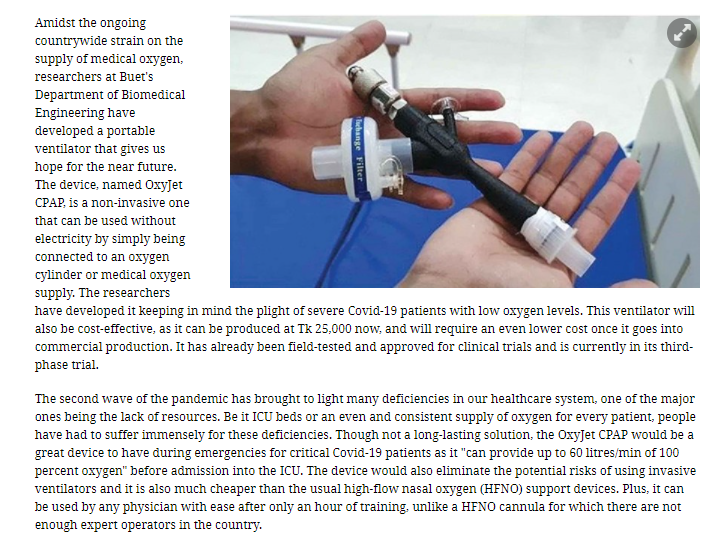Question : (a) Identify possible intangible assets or intellectual properties that may have resulted from the above invention. (b) What Intellectual Property( protection(s) should the Lab seek for? (c) Why? Explain for each protection type
Question : (a) Identify possible intangible assets or intellectual properties that may have resulted from the above invention. (b) What Intellectual Property( protection(s) should the Lab seek for? (c) Why? Explain for each protection type
Principles of Economics 2e
2nd Edition
ISBN:9781947172364
Author:Steven A. Greenlaw; David Shapiro
Publisher:Steven A. Greenlaw; David Shapiro
Chapter2: Choice In A World Of Scarcity
Section: Chapter Questions
Problem 22CTQ: What assumptions about the economy must he true for the invisible hand to work? To what extent are...
Related questions
Question
Please help with this asap.
I post the questions below and the two different articles we get this info from. In below I give the link and also add the news/articles picture.
Recently, Bangladesh University of Engineering and Technology (BUET), mHealth Lab developed a low cost ventilator to help during the ongoing COVID-19 pandemic.
Read the following published news " https://mhealth.buet.ac.bd/oxyjet/ ". Then ans the questions.
Question :
(a) Identify possible intangible assets or intellectual properties that may have resulted from the above invention.
(b) What Intellectual Property( protection(s) should the Lab seek for?
(c) Why? Explain for each protection type.

Transcribed Image Text:A team of engineers from Bangladesh University of Engineering and Technology (BUET) has developed a low-
cost oxygen supply instrument called OxyJet, an innovation which may offer lifeline to people severely affected
by the Covid-19 in countries like Bangladesh.
According to the engineers involved, OxyJet can present effective treatment solution to Covid-19 patients by
supplying high-flow oxygen with positive pressure. The coronavirus attacks people's lungs and causes breathing
problems.
OxyJet is a C-PAP ventilator, which uses the pressure of the medical oxygen source to generate a high-flow of air
and oxygen mixture using the jet-mixing principle.
It can deliver up to 60 litres of oxygen per minute, said the team leader of the
পিন সেট
project undertaken by the BUET's Department of Biomedical Engineering.
To create high-flow oxygen, it requires a C-PAP (Continuous Positive Air-way
Pressure) ventilator, a conventional one which could cost up to Tk 100,000.
করলেই নগদ-এ
The OxyJet C-PAP would not require such cost but would be more efficient
solution to this problem, Dr. Taufiq Hasan, an assistant professor and the team
leader of the project told this author.
পিন সেট
Firstly, according to project document, the system is completely mechanical and
doesn't require electricity. This provides the machine an edge over traditional
C-PAPS which would require constant electricity and cannot be used in remote
areas or in an ambulance. Secondly, the device costs about Tk 2,000 only (full system, with masks and cylinder
costs more) which is a fraction of the traditional market price.
"Conventional C-PAPS use a vented mask which disperses virus particles in the air through aerosolization. We use
a tightly fitted non-vented C-PAP mask with a viral filter to reduce such contamination," said the team leader.
He explained that all traditional C-PAPS do not include an oxygen port in the inlet and thus cannot provide an
oxygen concentration (FiO2) up to 100 per cent. "OxyJet C-PAP is designed for treating hypoxemic patients in
mind and can provide up to 100 per cent FiO2. Besides, Oxyjet is very easy to use for doctors as its user interface
consists of a flow-meter knob, that can be rotated to increase or decrease the oxygen flow."
The team believes the project is promising as it would be able to provide low-cost, energy efficient and valuable
high-pressure oxygen for patients, even beyond the pandemic.

Transcribed Image Text:Amidst the ongoing
countrywide strain on the
supply of medical oxygen,
researchers at Buet's
Department of Biomedical
Engineering have
developed a portable
ventilator that gives us
hope for the near future.
The device, named OxyJet
CPAP, is a non-invasive one
that can be used without
electricity by simply being
connected to an oxygen
cylinder or medical oxygen
supply. The researchers
have developed it keeping in mind the plight of severe Covid-19 patients with low oxygen levels. This ventilator will
also be cost-effective, as it can be produced at Tk 25,000 now., and will require an even lower cost once it goes into
commercial production. It has already been field-tested and approved for clinical trials and is currently in its third-
phase trial.
The second wave of the pandemic has brought to light many deficiencies in our healthcare system, one of the major
ones being the lack of resources. Be it ICU beds or an even and consistent supply of oxygen for every patient, people
have had to suffer immensely for these deficiencies. Though not a long-lasting solution, the OxyJet CPAP would be a
great device to have during emergencies for critical Covid-19 patients as it "can provide up to 60 litres/min of 100
percent oxygen" before admission into the ICU. The device would also eliminate the potential risks of using invasive
ventilators and it is also much cheaper than the usual high-flow nasal oxygen (HFNO) support devices. Plus, it can
be used by any physician with ease after only an hour of training, unlike a HFNO cannula for which there are not
enough expert operators in the country.
lchange Filter
Expert Solution
This question has been solved!
Explore an expertly crafted, step-by-step solution for a thorough understanding of key concepts.
Step by step
Solved in 2 steps

Knowledge Booster
Learn more about
Need a deep-dive on the concept behind this application? Look no further. Learn more about this topic, economics and related others by exploring similar questions and additional content below.Recommended textbooks for you

Principles of Economics 2e
Economics
ISBN:
9781947172364
Author:
Steven A. Greenlaw; David Shapiro
Publisher:
OpenStax

Principles of Economics 2e
Economics
ISBN:
9781947172364
Author:
Steven A. Greenlaw; David Shapiro
Publisher:
OpenStax